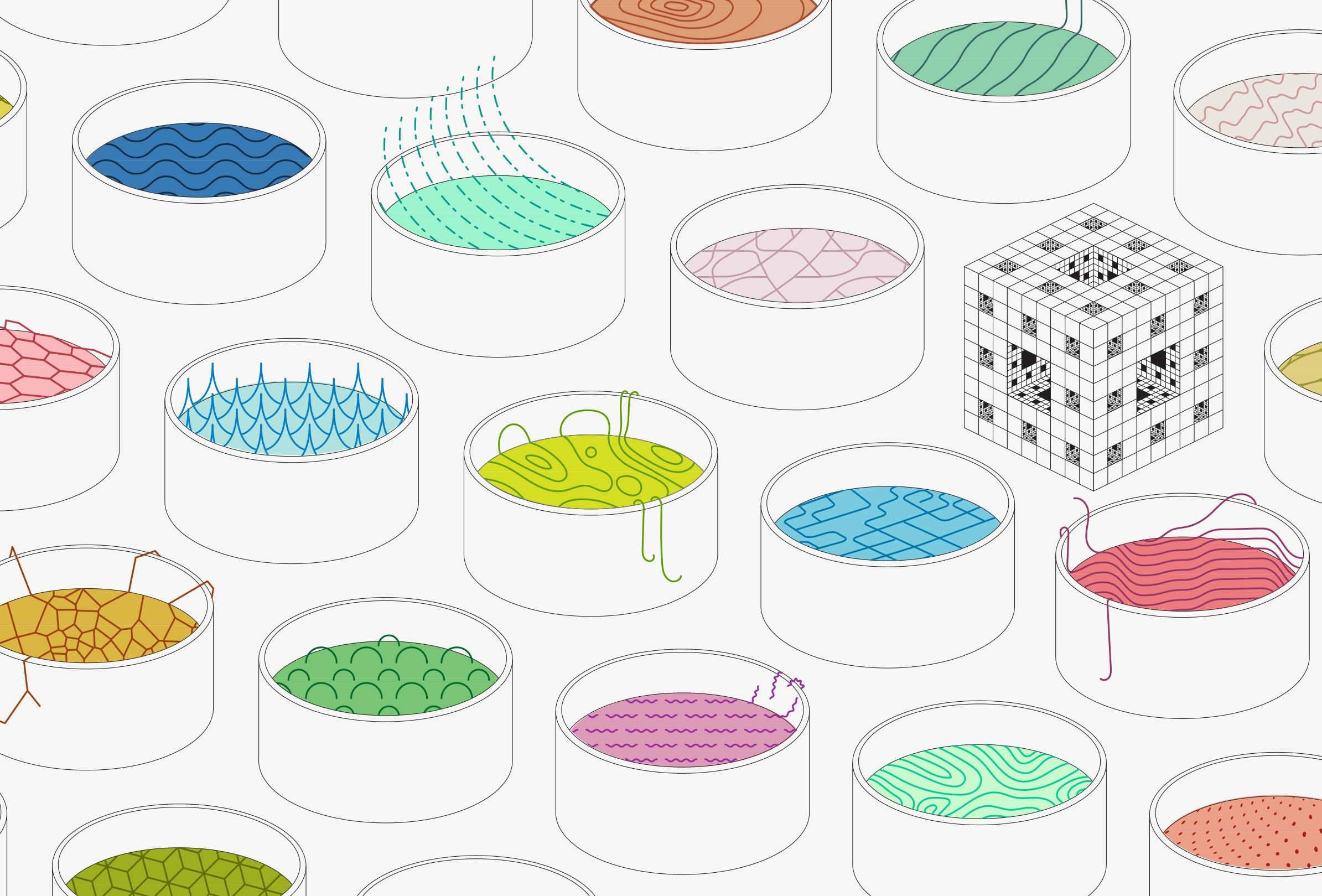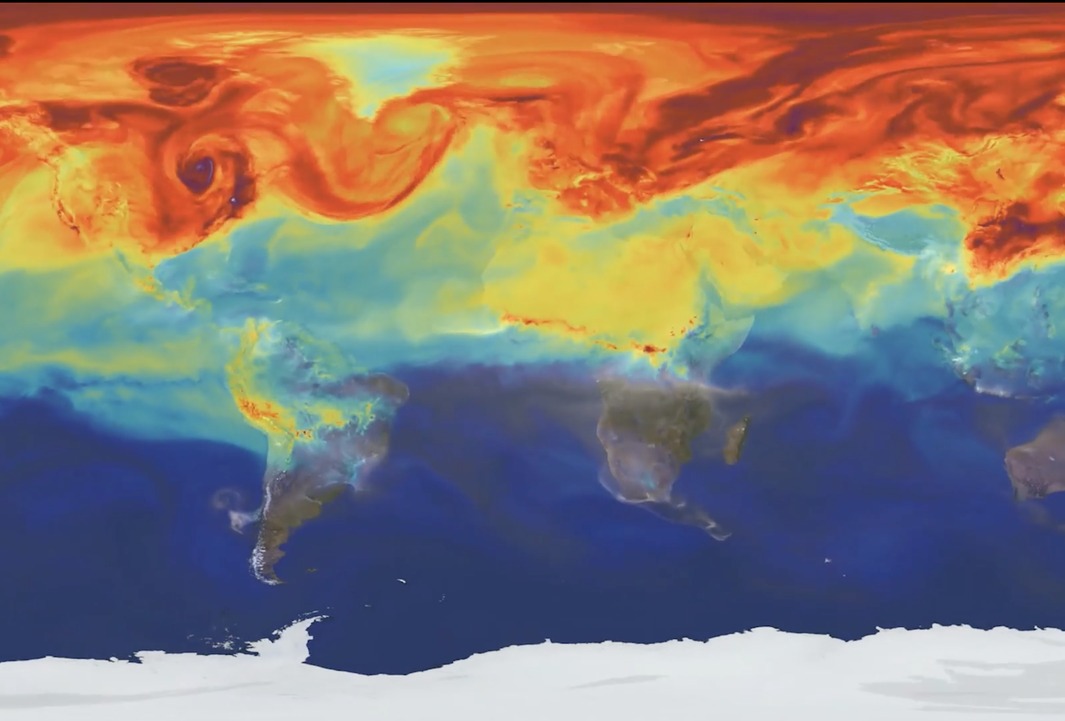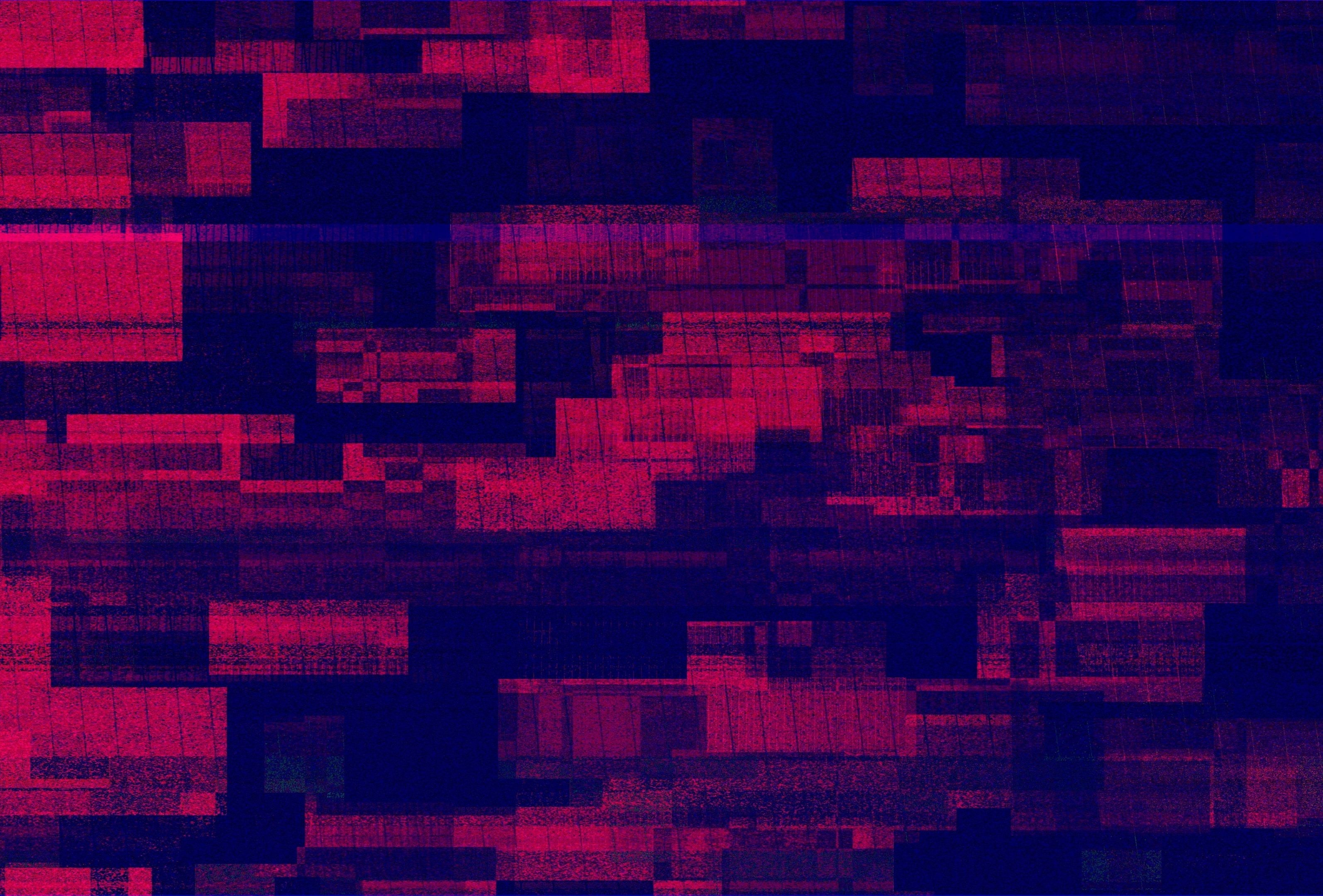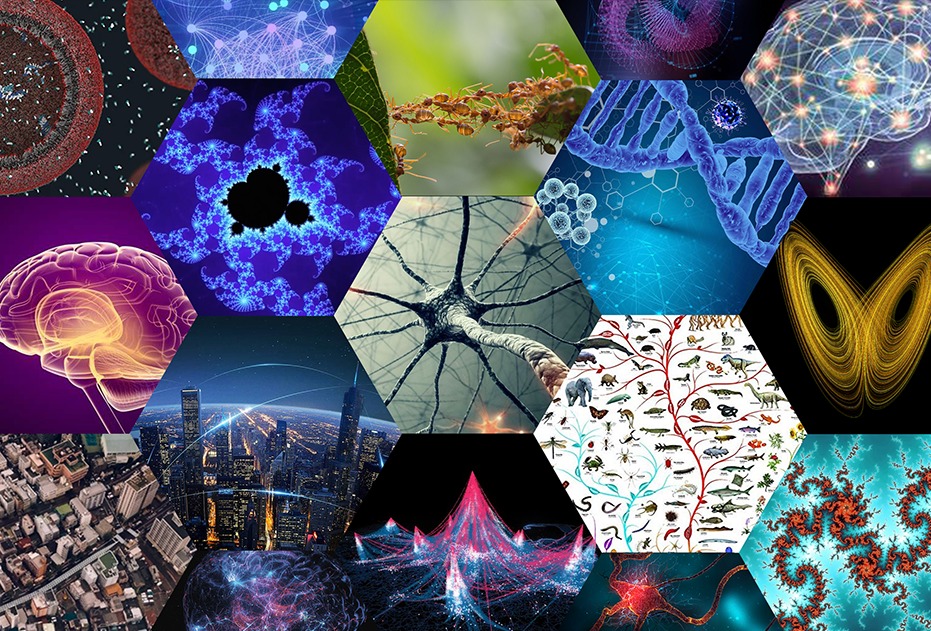-
E. Selous, Thought transference (or what?) in birds. Nature 129, 263 (1932).
-
Aristotle, Politics (Batoche Books, 1999).
-
M. Granovetter, The strength of weak ties. Am. J. Sociol. 78, 1360–1380 (1973).
-
H. Blumer, Social problems as collective behavior. Soc. Probl. 18, 298–306 (1971).
-
I. D. Couzin, J. Krause, Self-organization and collective behavior in vertebrates. Adv. Stud. Behav. 32, 1–75 (2003).
-
T. Walker, D. Sesko, C. Wieman, Collective behavior of optically trapped neutral atoms. Phys. Rev. Lett. 64, 408–411 (1990).
-
R. A. Bentley, M. J. O’Brien, Collective behaviour, uncertainty and environmental change. Phil. Trans. R. Soc. A. 373, 20140461 (2015).
-
S. A. Levin, Ecosystems and the biosphere as complex adaptive systems. Ecosystems 1, 431–436 (1998).
-
R. M. May, S. A. Levin, G. Sugihara, Complex systems: Ecology for bankers. Nature 451, 893–895 (2008).
-
M. Scheffer et al., Anticipating critical transitions. Science 338, 344–348 (2012).
-
P. J. Crutzen, W. Steffen, How long have we been in the Anthropocene era? Clim. Change 61, 251–257 (2003).
-
W. Steffen, P. J. Crutzen, J. R. McNeill. The Anthropocene: Are humans now overwhelming the great forces of nature. Ambio 36, 614–621 (2007).
-
A. D. Barnosky et al., Has the Earth’s sixth mass extinction already arrived? Nature 471, 51–57 (2011).
-
W. Steffen et al., Trajectories of the earth system in the Anthropocene. Proc. Natl. Acad. Sci. U.S.A. 115, 8252–8259 (2018).
-
S. Carattini, S. Levin, A. Tavoni, Cooperation in the climate commons. Rev. Environ. Econ. Pol. 13, 227–247 (2019).
-
I. M. Otto et al., Social tipping dynamics for stabilizing Earth’s climate by 2050. Proc. Natl. Acad. Sci. U.S.A. 117, 2354–2365 (2020).
-
J. J. Van Bavel et al., Using social and behavioural science to support COVID-19 pandemic response. Nat. Hum. Behav. 4, 460–471 (2020).
-
J. Zarocostas, How to fight an infodemic. Lancet 395, 676 (2020).
-
T. Hobbes, Leviathan (Penguin Books, Baltimore, MD, 1968).
-
M. E. Soulé, What is conservation biology? Bioscience 35, 727–734 (1985).
-
D. J. Watts, S. H. Strogatz, Collective dynamics of ‘small-world’ networks. Nature 393, 440–442 (1998).
-
D. Brockmann, D. Helbing, The hidden geometry of complex, network-driven contagion phenomena. Science 342, 1337–1342 (2013).
-
A. L. Barabási, R. Albert, Emergence of scaling in random networks. Science 286, 509–512 (1999).
-
C. Schill et al., A more dynamic understanding of human behaviour for the Anthropocene. Nat. Sustain. 2, 1075–1082 (2019)
-
.J. Holland, Complex adaptive systems. A New Era in Computation 121, 17–30 (1992).
-
D. V. V. Radakov, Schooling in the Ecology of Fish (John Wiley & Sons, 1973).
-
D. J. Watts, A twenty-first century science. Nature 445, 489 (2007).
-
R. Boyd, P. J. Richerson, Culture and the Evolutionary Process (University of Chicago Press, 1985).
-
C. Castellano, S. Fortunato, V. Loreto, Statistical physics of social dynamics. Rev. Mod. Phys. 81, 591 (2009).
-
D. Centola, M. Macy, Complex contagions and the weakness of long ties. Am. J. Sociol. 113, 702–734 (2007).
-
M. De Condorcet, Essay on the Application of Analysis to the Probability of Majority Decisions (Imprimerie Royale, Paris, France, 1785).
-
L. Conradt, T. J. Roper, Group decision-making in animals. Nature 421, 155 (2003).
-
R. E. Hertwig, U. E. Hoffrage, Simple Heuristics in a Social World (Oxford University Press, 2013).
-
W. Hoppitt, K. N. Laland, Social Learning: An Introduction to Mechanisms, Methods, and Models (Princeton University Press, 2013).
-
M. O. Jackson, Social and Economic Networks (Princeton University Press, 2010).
-
J. Henrich, The Secret of Our Success (Princeton University Press, Princeton, NJ, 2017).
-
J. M. Hofman, A. Sharma, D. J. Watts, Prediction and explanation in social systems. Science 355, 486–488 (2017).
-
M. S. Lewis-Beck, M. Stegmaier, “Election forecasting, scientific approaches” in Encyclopedia of Social Network Analysis and Mining, R. Alhajj, J. Rokne, Eds. (Springer New York, New York, NY, 2016), pp. 1–8.
-
S. B. Rosenthal, C. R. Twomey, A. T. Hartnett, H. S. Wu, I. D. Couzin, Revealing the hidden networks of interaction in mobile animal groups allows prediction of complex behavioral contagion. Proc. Natl. Acad. Sci. U.S.A. 112, 201420068 (2015).
-
A. Strandburg-Peshkin, D. R. Farine, I. D. Couzin, M. C. Crofoot, Shared decision-making drives collective movement in wild baboons. Science 348, 1358–1361 (2015).
-
D. J. T. Sumpter, The principles of collective animal behaviour. Philos. Trans. R. Soc. Lond. Ser. B Biol. Sci. 361, 5–22 (2006).
-
I. Couzin, Collective minds. Nature 445, 715 (2007).
-
D. Sumpter, Collective Animal Behavior (Princeton University Press, Princeton, NJ, ed. 1, 2010), vol. 1.
-
D. M. Gordon, The ecology of collective behavior in ants. Annu. Rev. Entomol. 64, 35–50 (2019).
-
S. P. Carroll et al., Applying evolutionary biology to address global challenges. Science 346, 1245993 (2014).
-
T. K. Rudel, Shocks, States, and Sustainability: The Origins of Radical Environmental Reforms – Oxford Scholarship (Oxford University Press, Oxford, UK, 2019).
-
E. Ostrom, Governing the Commons: The Evolution of Institutions for Collective Action (Cambridge University Press, 2015).
-
J. T. Stock, Are humans still evolving? Technological advances and unique biological characteristics allow us to adapt to environmental stress. Has this stopped genetic evolution? EMBO Rep. 9 (suppl. 1, 51–54 (2008).
-
P. Turchin, T. E. Currie, E. A. L. Turner, S. Gavrilets, War, space, and the evolution of Old World complex societies. Proc. Natl. Acad. Sci. U.S.A. 110, 16384–16389 (2013).
-
H. J. Zahid, E. Robinson, R. L. Kelly, Agriculture, population growth, and statistical analysis of the radiocarbon record. Proc. Natl. Acad. Sci. U.S.A. 113, 931–935 (2016).
-
J. Henrich, The WEIRDest People in the World: How the West Became Psychologically Peculiar and Particularly Prosperous (Farrar, Straus and Giroux, New York, NY, 2020), vol. 1.
-
K. Sterelny, From hominins to humans: How sapiens became behaviourally modern. Philos. Trans. R. Soc. Lond. Ser. B Biol. Sci. 366, 809–822 (2011).
-
P. J. Boczkowski, The mutual shaping of technology and society in videotex newspapers: Beyond the diffusion and social shaping perspectives. Inf. Soc. 20, 255–267 (2004).
-
M. W. Moffett, Supercolonies of billions in an invasive ant: What is a society? Behav. Ecol. 23, 925–933 (2012).
-
J. L. Brown, Optimal group size in territorial animals. J. Theor. Biol. 95, 793–810 (1982).
-
G. Hardin, The Tragedy of the Commons. Science 162, 1243–1248 (1968).
-
C. R. Ember, M. Ember, Resource unpredictability, mistrust, and war. J. Conflict Resolut. 36, 242–262 (1992).
-
S. Galam, Contrarian deterministic effects on opinion dynamics: “The hung elections scenario.” Phys. Stat. Mech. Appl. 333, 453–460 (2004).
-
S. Gekle, L. Peliti, S. Galam, Opinion dynamics in a three-choice system. Euro. Phys. J. B 45, 569–575 (2005).
-
A. B. Kao, I. D. Couzin, Decision accuracy in complex environments is often maximized by small group sizes. Proc. Biol. Sci. 281, 20133305 (2014).
-
M. Galesic, D. Barkoczi, K. Katsikopoulos, Smaller crowds outperform larger crowds and individuals in realistic task conditions. Decision 5, 1–15 (2018).
-
R. I. M. Dunbar, Neocortex size as a constraint on group size in primates. J. Hum. Evol. 22, 469–493 (1992).
-
A. R. Tilman, A. K. Dixit, S. A. Levin, Localized prosocial preferences, public goods, and common-pool resources. Proc. Natl. Acad. Sci. U.S.A. 116, 5305–5310 (2019).
-
W. Barfuss, J. F. Donges, V. V. Vasconcelos, J. Kurths, S. A. Levin, Caring for the future can turn tragedy into comedy for long-term collective action under risk of collapse. Proc. Natl. Acad. Sci. U.S.A. 117, 12915–12922 (2020).
-
M. Casari, C. Tagliapietra, Group size in social-ecological systems. Proc. Natl. Acad. Sci. U.S.A. 115, 2728–2733 (2018).
-
D. Lazer, A. Friedman, The network structure of exploration and exploitation. Adm. Sci. Q. 52, 667–694 (2007).
-
T. N. Wisdom, X. Song, R. L. Goldstone, Social learning strategies in networked groups. Cognit. Sci. 37, 1383–1425 (2013).
-
D. Barkoczi, M. Galesic, Social learning strategies modify the effect of network structure on group performance. Nat. Commun. 7, 13109 (2016).
-
C. L. Apicella, F. W. Marlowe, J. H. Fowler, N. A. Christakis, Social networks and cooperation in hunter-gatherers. Nature 481, 497–501 (2012).
-
W. J. Brady et al., Emotion shapes the diffusion of moralized content in social networks. Proc. Natl. Acad. Sci. U.S.A. 114, 7313–7318 (2017).
-
J. Chan, A. Ghose, Internet’s dirty secret: Assessing the impact of online intermediaries on HIV transmission. MIS Quarterly, 38, 955–976 (2012).
-
J. J. Lehmiller, M. Ioerger, Social networking smartphone applications and sexual health outcomes among men who have sex with men. PloS One 9, e86603 (2014).
-
W. J. Brady, M. J. Crockett, J. J. Van Bavel, The MAD Model of Moral Contagion: The role of motivation, attention and design in the spread of moralized content. Perspect. Psychol. Sci. 15, 978–1010 (2020).
-
M. Kimura, K. Saito, “Tractable models for information diffusion in social networks” in Lecture Notes in Computer Science (Including Subseries Lecture Notes in Artificial Intelligence and Lecture Notes in Bioinformatics), J. Furnkranz, Ed. (Springer-Verlag, 2006), vol. 4213, pp. 259–271.
-
E. Bakshy, I. Rosenn, C. Marlow, L. Adamic, “The role of social networks in information diffusion” in WWW’12 – Proceedings of the 21st Annual Conference on World Wide Web (ACM Press, New York, NY, 2012), pp. 519–528.
-
D. Centola, An experimental study of homophily in the adoption of health behavior. Science 334, 1269–1273 (2011).
-
S. E. Asch, Opinions and social pressure. Sci. Am. 193, 31–35 (1955).
-
J. G. Heinberg, Theories of majority rule. Am. Polit. Sci. Rev. 26, 452–469 (1932).
-
K. N. Laland, Social learning strategies. Anim. Learn. Behav. 32, 4–14 (2004).
-
P. L. Krapivsky, S. Redner, Dynamics of majority rule in two-state interacting spin systems. Phys. Rev. Lett. 90, 238701 (2003).
-
M. W. Feldman, L. L. Cavalli-Sforzatt, Cultural and biological evolutionary processes: Gene-culture disequilibrium. Proc. Natl. Acad. Sci. U.S.A. 81, 1604–1607 (1984).
-
T. E. Ruggiero, Uses and gratifications theory in the 21st century. Mass Commun. Soc. 3, 3–37 (2000).
-
S. Vosoughi, D. Roy, S. Aral, The spread of true and false news online. Science 359, 1146–1151 (2018).
-
J. Becker, D. Brackbill, D. Centola, Network dynamics of social influence in the wisdom of crowds. Proc. Natl. Acad. Sci. U.S.A. 114, E5070–E5076 (2017).
-
A. V. Banerjee, A. Chandrasekhar, E. Duflo, M. O. Jackson, Gossip: Identifying central individuals in a social network (2014). https://www.nber.org/papers/w20422. Accessed 10 June 2021.
-
C. O’Connor, J. O. Weatherall, “Modeling how false beliefs spread” in The Routledge Handbook of Political Epistemology, M. Hannon, J. de Ridder, Eds. (Routledge, 2021), pp. 203–213.
-
M. J. Salganik et al., Experimental study of inequality and unpredictability in an artificial cultural market. Science 311, 854–856 (2006).
-
A. M. Petersen, E. M. Vincent, A. L. R. Westerling, Discrepancy in scientific authority and media visibility of climate change scientists and contrarians. Nat. Commun. 10, 3966 (2019).
-
A. Archer, A. Cawston, B. Matheson, M. Geuskens, Celebrity, democracy, and epistemic power. Perspect. Polit. 18, 1–16 (2019).
-
K. Koltai, Vaccine information seeking and sharing: HOW private Facebook groups contributed to the anti-vaccine movement online. AoIR Selected Papers of Internet Research 10, AoIR2020 (2020).
-
V. Narayanan et al., Polarization, partisanship and junk news consumption over social media in the US. arXiv [Preprint] (2018). https://arxiv.org/abs/1803.01845v1 (Accessed 10 June 2021).
-
S. Guriev, N. I. Melkinov, E. Zhuravskaya, Knowledge is power: Mobile internet, government confidence, and populism. VOXEU CEPR (2019). https://voxeu.org/article/mobile-internet-government-confidence-and-populism. Accessed 10 June 2021.
-
J. Pallavicini, B. Hallsson, K. Kappel, Polarization in groups of Bayesian agents. Synthese 198, 1–55 (2018).
-
K. J. S. Zollman, Social network structure and the achievement of consensus. Polit. Philos. Econ. 11, 26–44 (2012).
-
R. Hegselmann, U. Krause, Opinion dynamics and bounded confidence: Models, analysis and simulation. JASSS 5, 3/2 (2002).
-
G. Deffuant, D. Neau, F. Amblard, G. Weisbuch, Mixing beliefs among interacting agents. Adv. Complex Syst. 03, 87–98 (2000).
-
A. J. Stewart et al., Information gerrymandering and undemocratic decisions. Nature 573, 117–121 (2019).
-
N. A. Christakis, J. H. Fowler, The spread of obesity in a large social network over 32 years. N. Engl. J. Med. 357, 370–379 (2007).
-
M. Moussaïd, S. M. Herzog, J. E. Kämmer, R. Hertwig, Reach and speed of judgment propagation in the laboratory. Proc. Natl. Acad. Sci. U.S.A. 114, 4117–4122 (2017).
-
H. Shirado, N. A. Christakis, Locally noisy autonomous agents improve global human coordination in network experiments. Nature 545, 370–374 (2017).
-
C. A. Yates et al., Inherent noise can facilitate coherence in collective swarm motion. Proc. Natl. Acad. Sci. U.S.A. 106, 5464–5469 (2009).
-
J. F. Lindner, B. K. Meadows, W. L. Ditto, M. E. Inchiosa, A. R. Bulsara, Array enhanced stochastic resonance and spatiotemporal synchronization. Phys. Rev. Lett. 75, 3–6 (1995).
-
L. Chittka, P. Skorupski, N. E. Raine, Speed–accuracy tradeoffs in animal decision making. Trends Ecol. Evol. 24, 400–407 (2009).
-
B. Bago, D. G. Rand, G. Pennycook, Fake news, fast and slow: Deliberation reduces belief in false (but not true) news headlines. J. Exp. Psychol. Gen. 149, 1608–1613 (2020).
-
G. Pennycook et al., Shifting attention to accuracy can reduce misinformation online. Nature 592, 590–595 (2021).
-
B. A. Williams, M. X. Delli Carpini, Monica and Bill all the time and everywhere. Am. Behav. Sci. 47, 1208–1230 (2004).
-
Election Integrity Partnership, “The long fuse: Misinformation and the 2020 election” (Tech. Rep., Center for an Informed Public, Digital Forensic Research Lab, Graphika, & Stanford Internet Observatory, Stanford Digital Repository, Stanford, CA 2021).
-
W. L. Bennett, B. Pfetsch, Rethinking political communication in a time of disrupted public spheres. J. Commun. 68, 243–253 (2018).
-
R. M. Entman, N. Usher, Framing in a fractured democracy: Impacts of digital technology on ideology, power and cascading network activation. J. Commun. 68, 298–308 (2018).
-
T. Marlow, S. Miller, J. T. Roberts. Bots and online climate discourses: Twitter discourse on President Trump’s announcement of U.S. withdrawal from the Paris Agreement. Clim. Pol.,2021).
-
D. M. J. Lazer et al., The science of fake news. Science 359, 1094–1096 (2018).
-
G. Pennycook, D. G. Rand, Research Note: Examining False Beliefs about Voter Fraud in the Wake of the 2020 Presidential Election (Harvard Kennedy School Misinformation Review, 2021).
-
J. D. West, C. T. Bergstrom, Misinformation in and about science. Proc. Natl. Acad. Sci. U.S.A. 118, e1912444117 (2021).
-
S. Subramanian, Inside the Macedonian fake-news complex. Wired, 15 February 2017. https://www.wired.com/2017/02/veles-macedonia-fake-news/. Accessed 16 June 2021.
-
E. Szathmáry, J. M. Smith, The major evolutionary transitions. Nature 374, 227–232 (1995).
-
C. Bergstrom, J. West, Calling Bullshit: The Art of Skepticism in a Data-Driven World (Random House, New York, NY, ed. 1, 2020).
-
Z. R. Shi, C. Wang, F. Fang, Artificial intelligence for social good: A survey. arXiv [Preprint] (2020). https://arxiv.org/abs/2001.01818v1 (Accessed 10 June 2021).
-
I. Rahwan, Society-in-the-loop: Programming the algorithmic social contract. Ethics Inf. Technol. 20, 5–14 (2018).
-
T. T. Nguyen, P.-M. Hui, F. M. Harper, L. Terveen, J. A. Konstan, “Exploring the filter bubble” in Proceedings of the 23rd International Conference on World Wide Web – WWW ’14 (ACM Press, New York, NY, 2014), pp. 677–686.
-
E. Bakshy, S. Messing, L. A. Adamic, Exposure to ideologically diverse news and opinion on Facebook. Science 348, 1130–1132 (2015).
-
E. Bozdag, Bias in algorithmic filtering and personalization. Ethics Inf. Technol. 15, 209–227 (2013).
-
B. Toff, R. K. Nielsen, “I just google it”: Folk theories of distributed discovery. J. Commun. 68, 636–657 (2018).
-
Z. Obermeyer, B. Powers, C. Vogeli, S. Mullainathan, Dissecting racial bias in an algorithm used to manage the health of populations. Science 366, 447–453 (2019).
-
K. Lum, W. Isaac, To predict and serve? Significance 13, 14–19 (2016).
-
C. O’Neil, Weapons of Math Destruction: How Big Data Increases Inequality and Threatens Democracy (Random House, New York, NY, ed. 1, 2016), vol. 1.
-
J. A. Evans, Electronic publication and the narrowing of science and scholarship. Science 321, 395–399 (2008).
-
M. Alfano, J. A. Carter, M. Cheong, Technological seduction and self-radicalization. J. Am. Philos. Assoc. 4, 298–322 (2018).
-
M. H. Ribeiro, R. Ottoni, R. West, V. A. F. Almeida, W. M. W. Meira, “Auditing radicalization pathways on YouTube” in Proceedings of the 2020 Conference on Fairness, Accountability, and Transparency (Association for Computing Machinery, Inc., New York, NY, 2020), vol. 11, pp. 131–141.
-
S. Deng, L. Huang, G. Xu, X. Wu, Z. Wu, On deep learning for trust-aware recommendations in social networks. IEEE Trans. Neural Netw. Learn. Syst. 28, 1164–1177 (2017).
-
R. K. Merton, The Matthew effect in science. Science 159, 55–63 (1968).
-
J. Su, A. Sharma, S. Goel, “The effect of recommendations on network structure” in Proceedings of the 25th International Conference on World Wide Web – WWW ’16 (ACM Press, New York, NY, 2016). pp. 1157–1167.
-
J. Stoyanovich, J. J. Van Bavel, T. V. West, The imperative of interpretable machines. Nat. Mach. Intel. 2, 197–199 (2020).
-
B. Bimber, A. J. Flanagin, C. Stohl, Collective Action in Organizations: Interaction and Engagement in an Era of Technological Change (Cambridge University Press, 2012).
-
J. Rockström et al., A roadmap for rapid decarbonization. Science 355, 1269–1271 (2017).
-
R. Birger, R. Kouyos, J. Dushoff, B. Grenfell, Modeling the effect of HIV coinfection on clearance and sustained virologic response during treatment for hepatitis C virus. Epidemics 12, 1–10 (2015).
-
D. Fortin et al., Wolves influence elk movements: Behavior shapes a trophic cascade in Yellowstone National Park. Ecology 86, 1320–1330 (2005).
-
H. Margetts, P. John, S. Hale, T. Yasseri, Political Turbulence (Princeton University Press, Princeton, NJ, ed. 1, 2016), vol. 1.
-
N. Goldenfeld, L. P. Kadanoff, Simple lessons from complexity. Science 284, 87–89 (1999).
-
J. H. Miller, S. E. Page, Complex Adaptive Systems (Princeton University Press, Princeton, NJ, 2007).
-
J. Duffy, J. M. Epstein, R. Axtell, Growing artificial societies: Social science from the bottom up. South. Econ. J. 64, 791 (1998).
-
D. J. Watts, “Computational social science: Exciting progress and future directions” in Frontiers of Engineering (National Academies Press, Washington, DC, 2013).
-
D. M. J. Lazer et al., Computational social science: Obstacles and opportunities. Science 369, 1060–1062 (2020).
-
N. Paton, A. Almaatouq, Empirica: Open-Source, Real-Time, Synchronous, Virtual Lab Framework (Zenodo, 2018).
-
X. Chen, S. C. J. Sin, Y. L. Theng, C. S. Lee, “Why do social media users share misinformation?” in Proceedings of the ACM/IEEE Joint Conference on Digital Libraries (Institute of Electrical and Electronics Engineers Inc., New York, NY, 2015), vol. 2015, pp. 111–114.
-
E. A. Rosa, O. Renn, A. M. McCright, The Risk Society Revisited: Social Theory and Risk Governance on JSTOR (Temple University Press, Philadelphia, PA, ed. 1, 2014).
-
M. Schlüter et al., A framework for mapping and comparing behavioural theories in models of social-ecological systems. Ecol. Econ. 131, 21–35 (2017).
-
F. S. Chapin et al., Ecosystem stewardship: Sustainability strategies for a rapidly changing planet. Trends Ecol. Evol. 25, 241–249 (2010).
-
D. S. Himmelstein, K. Powell, Analysis for “the history of publishing delays” blog post v1.0 (2016). https://zenodo.org/record/45516#.YLld9japHlw. Accessed 1 February 2021.
-
H. Else, How a torrent of COVID science changed research publishing – in seven charts. Nature 588, 553 (2020).
-
National Academies, Societal experts action network. https://www.nationalacademies.org/our-work/societal-experts-action-network#sl-three-columns-d2bc460d-5bb3-41ce-991f-80e4dd0bdae8. Accessed 1 February 2021.
-
S. H. Schwartz, An overview of the Schwartz theory of basic values. Online Read. Psychol. Culture 2, 1–20 (2012).
-
G. Pennycook, D. G. Rand, Who falls for fake news? The roles of bullshit receptivity, overclaiming, familiarity, and analytic thinking. J. Pers., in press.
-
J. J. Van Bavel, A. Pereira, The partisan brain: An identity-based model of political belief. Trends Cognit. Sci. 22, 213–224 (2018).
-
Y. Benkler, R. Farris, H. Roberts, Network Propaganda (Oxford University Press, 2018), vol. 1.
-
C. O’Connor, J. O. Weatherall, Scientific polarization. Eur. J. Phylos. Sci. 8, 855–875 (2018).
-
N. Oreskes, E. M. Conway, Defeating the merchants of doubt. Nature 465, 686–687 (2010).
-
J. Whitten-Woodring, M. S. Kleinberg, A. Thawnghmung, M. T. Thitsar, Poison if you don’t know how to use it: Facebook, democracy, and human rights in Myanmar. Int. J. Press Politics 25, 407–425 (2020).
-
N. Velásquez et al., Online hate network spreads malicious COVID-19 content outside the control of individual social media platforms. In Review (2020). https://www.researchsquare.com/article/rs-110371/v1. Accessed 10 June 2021.
-
B. Silverstein, Toward a science of propaganda. Polit. Psychol. 8, 49 (1987).
-
J. Donovan, B. Friedberg, “Source hacking media manipulation in practice executive summary” (Tech. Rep., Data & Society, 2019).
-
J. Kaiser et al., Mail-in voter fraud: Anatomy of a disinformation campaign. Berkman Klein Center (2020). https://cyber.harvard.edu/publication/2020/Mail-in-Voter-Fraud-Disinformation-2020. Accessed 10 June 2021.
-
S. Baluja et al., “Video suggestion and discovery for you tube: Taking random walks through the view graph” in Proceeding of the 17th International Conference on World Wide Web 2008, WWW’08 (ACM Press, New York, NY, 2008), pp. 895–904.
-
A. Mathur et al., “Dark patterns at scale: Findings from a crawl of 11K shopping websites.” in Proceedings of the ACM on Human-Computer Interaction (ACM, 2019), vol. 3.
-
K. Papadamou et al., “Disturbed Youtube for kids: Characterizing and detecting inappropriate videos targeting young children” in Proceedings of the 14th International AAAI Conference on Web and Social Media, ICWSM 2020 (AAAI Press, Palo Alto, CA, 2020), pp. 522–533.
-
A. Kittur, R. E. Kraut, “Harnessing the wisdom of crowds in Wikipedia: Quality through coordination” in Proceedings of the ACM Conference on Computer Supported Cooperative Work, CSCW (ACM Press, New York, NY, 2008), pp. 37–46.
-
C. Prandi, P. Salomoni, S. Mirri, “Mpass: Integrating people sensing and crowdsourcing to map urban accessibility” in 2014 IEEE 11th Consumer Communications and Networking Conference, CCNC 2014 (IEEE Computer Society, 2014), pp. 591–595.

















